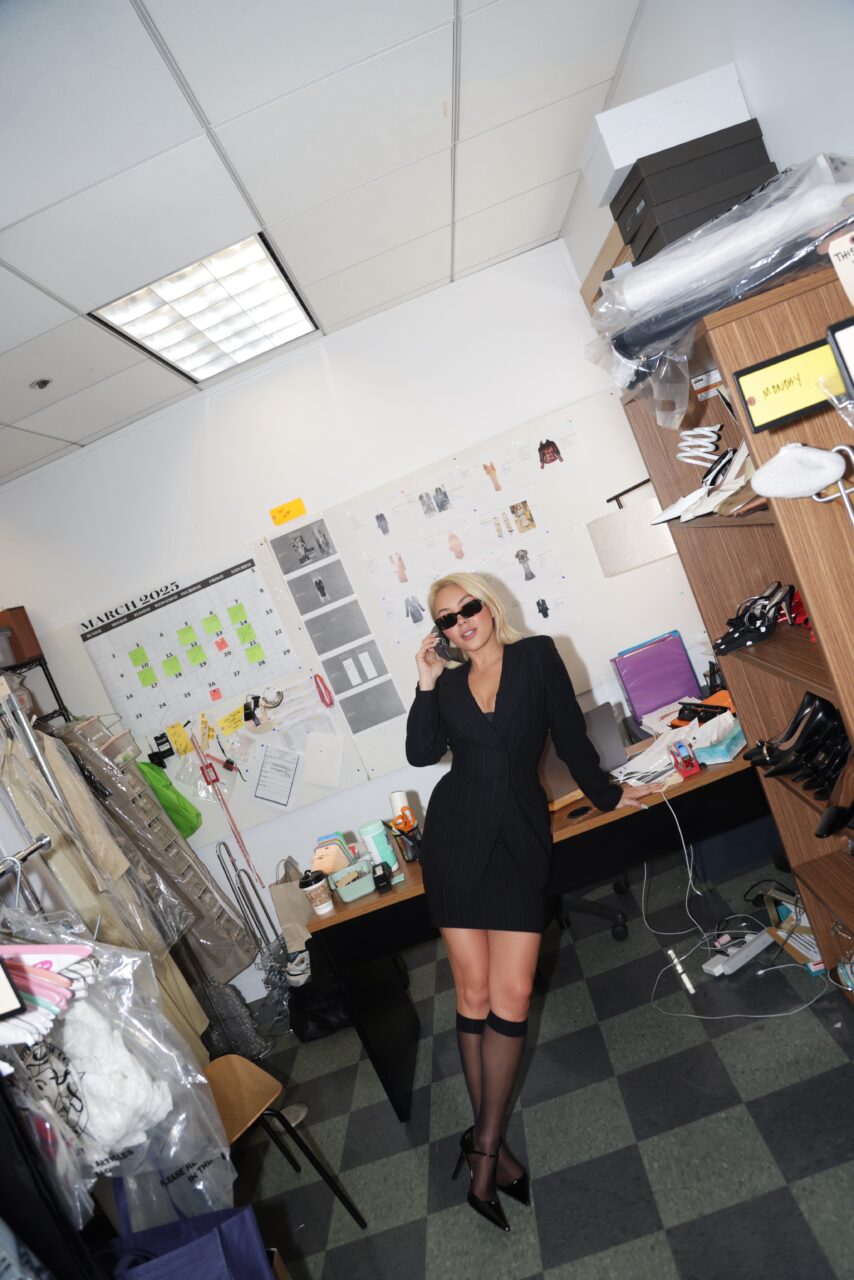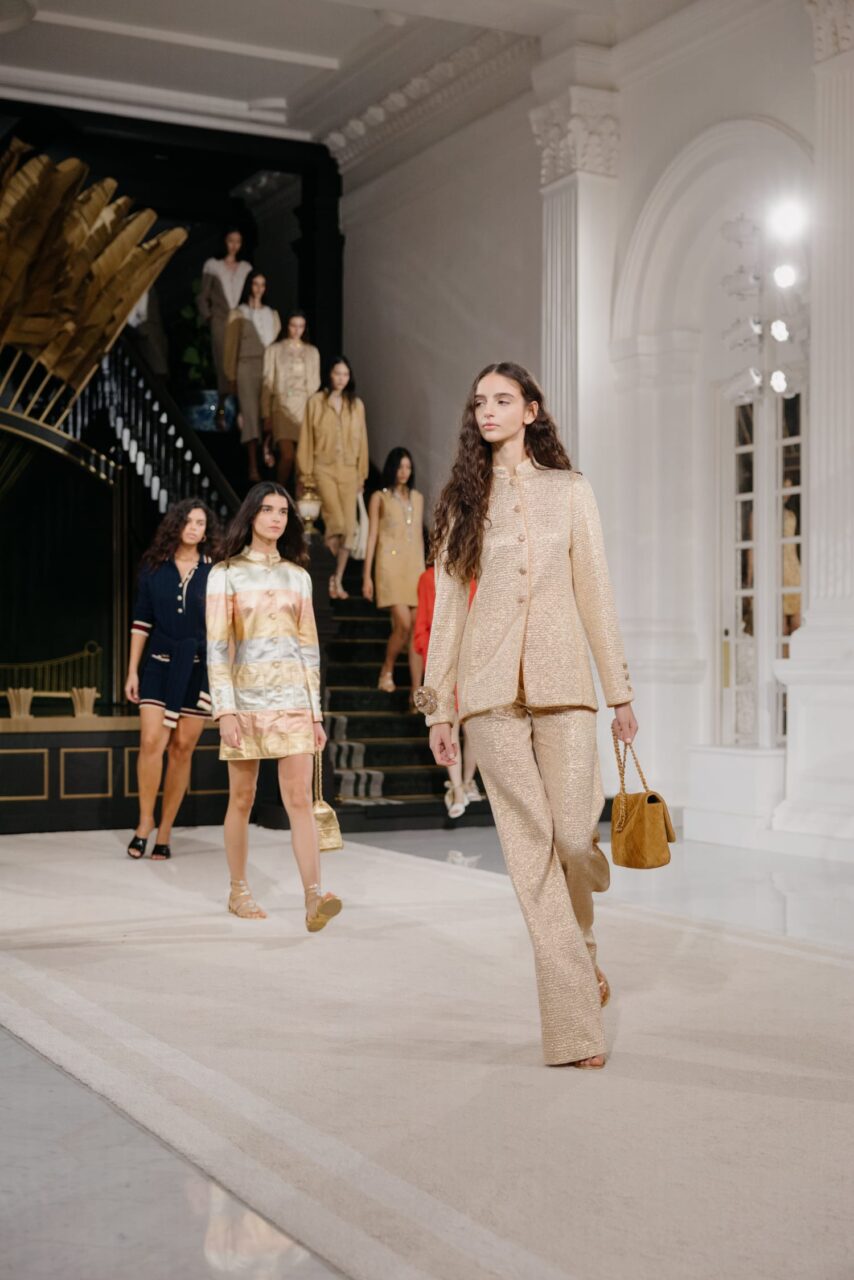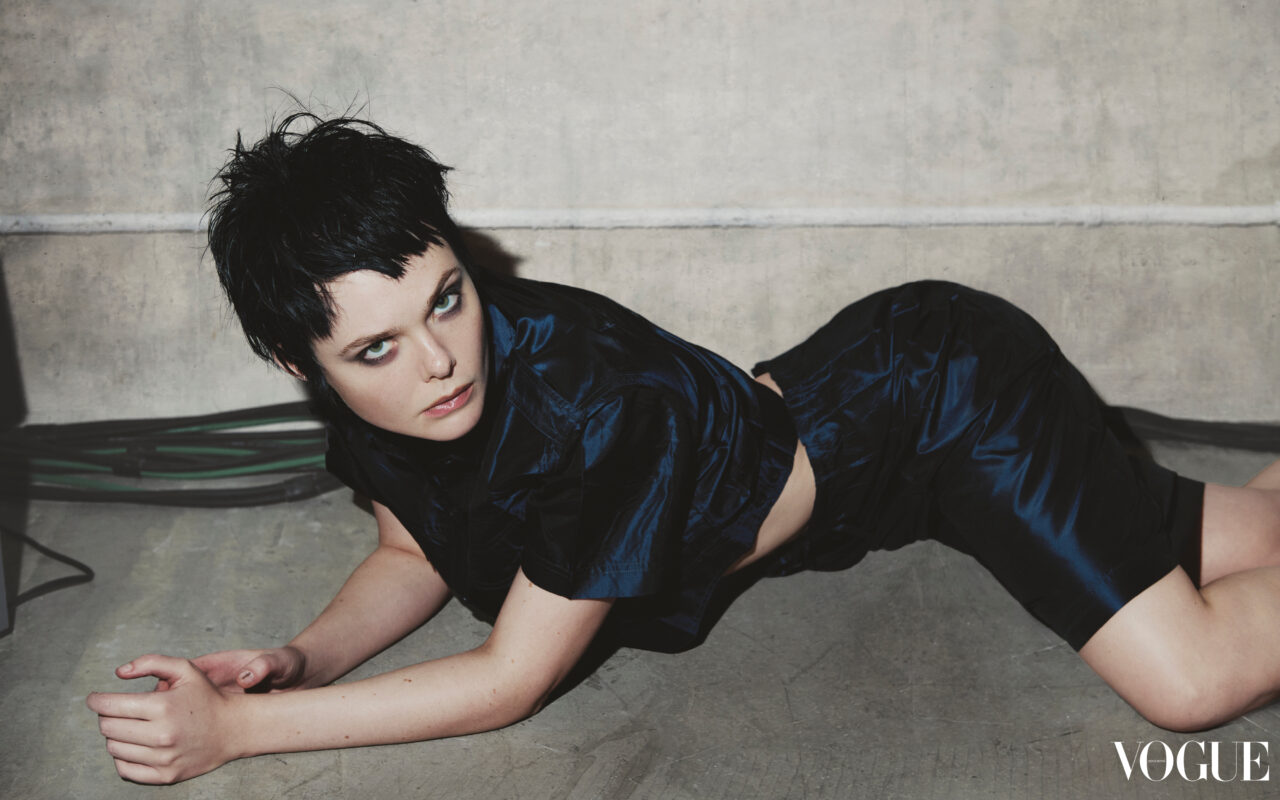In the rarefied world of luxury fashion, where the seamless coexistence of heritage and innovation is a prerequisite for lasting relevance, Bruno Pavlovsky stands as a quiet yet influential force. As President of Fashion at CHANEL, he has spent decades navigating the fine line between honouring Gabrielle Chanel’s storied legacy and propelling the house toward bold, uncharted horizons.
It’s a serene afternoon at the historic Raffles Hotel in Singapore, and the anticipation ahead of CHANEL’s Cruise 2025/26 Replica show is palpable. The iconic collection, first unveiled on the shores of Lake Como, has now journeyed to Southeast Asia, where it will soon captivate an eager audience of clients.
Up a few flights of stairs in this colonial-era landmark, the buzz of activity softens, and the air turns still. In this quiet moment, just minutes before the evening show, as models glide past on their way backstage, Bruno Pavlovsky sits down to reflect on his decades-long journey with CHANEL.
Creating Emotion at CHANEL
For Pavlovsky, every show, Replica or otherwise, represents the culmination of countless creative and logistical efforts. From the ateliers in Paris to over 250 boutiques worldwide, CHANEL’s global presence goes beyond just business—it is an intricate ecosystem designed to deliver creativity and emotion to every client.
“For me, it’s less about what I’ve contributed and more about what’s most important for the house to continue to exist. For me, it’s the permanent support to creation,” Pavlovsky begins, immediately honing in on what CHANEL truly values: fostering an enduring connection between creativity and its clients..
“Being a luxury fashion brand, I think the most important thing is to be able to bring novelties to our clients every two months in our boutiques. That’s the most important because that’s the way business works, and it’s also the way we’ve chosen to engage with our clients at CHANEL. It’s the best way to create emotion between the brand and the client.”
This emotional connection is no accident: it’s the result of a precise, global choreography. Pavlovsky explains how it all begins in Paris, where creative energy is sparked, before making its way to boutiques around the world. “It starts in Paris, from a design point of view, where the creative impulse begins. But after that, you need a machine, an incredible organisation, to bring this energy—this creative energy—to every single boutique in the world. We have over 250 boutiques now, and that’s something which is important.”
He continues, “When you see a collection, like the Cruise collection, it was first presented in Como, but this week, here in Singapore, we’ve orchestrated the launch of the collection globally—in every single boutique. It’s so much about the boutiques; it’s more about the customer base. All the customers know we are introducing the collection, and now the dream becomes real. You can see the product, you can touch a product, you can feel your connection with the product, and that’s what we have to organise six times a year when each collection arrives in the boutiques.”
For Pavlovsky, CHANEL’s unique ability to create meaningful moments stems from the freedom to slow down and craft experiences outside of the standard fashion calendar. Reflecting on this approach, he draws on the words of CHANEL ambassador Tilda Swinton, who took the stage before an audience of 420 students from Singapore’s art, design and fashion schools the morning of the Replica, alongside himself. “I don’t know if you were here when Tilda was talking about this, but the way to take our time to be who we are and take time to talk about who we want to be is something which is also super important.”
This philosophy resonates deeply with Pavlovsky, who sees CHANEL’s shows—particularly the Cruise and Métiers d’Art collections—as opportunities to connect on a more personal level with clients and press. “I love these moments because they’re not part of Fashion Week. We don’t just have 20 minutes to convince people. We have more time. And that’s quite important for us—to take our time in the world of today.”
More Than Meets The Eye
CHANEL’s commitment to excellence extends far beyond the surface. “We invest heavily across all supply chains for materials such as leather, cashmere, silk, and cotton—this is less visible. We have considered that we have seven key materials and want to offer our clients the best, which means the highest quality. But quality is not enough. We must have the best transparency. Clients want to know everything about where and how this product has been made. It’s not just about ‘I trust you,’ but whether you can check everything.”
“You don’t design the right product by chance,” he emphasises. “What has changed in our world in the past 20 years is access to materials. If you want the best quality, the most sustainable materials and continue to respect what we take from the earth, it’s something you have to work on.”
Beyond the physical product, services like CHANEL & Moi are a testament to CHANEL’s dedication to its loyal clientele, offering care, repair, and personalisation to ensure each client’s connection with the brand remains enduring. Investing in CHANEL means investing in an experience, and the French Maison ensures this is conveyed loud and clear.
Moments That Matter
“At CHANEL, we have two unique moments: the Cruise Collection and the Métiers d’Art Collection. These are CHANEL signatures—only CHANEL can do that. It’s our time. It’s our time to connect with our clients, and always, we seek destinations which are about our clients to share an experience, something unique, with our clients.”
Reflecting on the success of these events, Pavlovsky beams with pride. “We’ve done some crazy things—things that people might think are totally mad,” he bursts into laughter, “but they’ve worked so well. We did a Métiers d’Art show in Dakar, Senegal, and we did the Replica show in Tokyo. The replica in Tokyo was one of the most successful we’ve ever done. Think about it—Senegalese music in Tokyo! It created such a phenomenon, such energy.”
He pauses and smiles as he recalls the show. “For the first time in my life, I saw all the clients dancing at the end of the show, super excited. To me, it’s this unpredictable mix that makes these events so special. It’s not about being unpredictable for the sake of it, but about daring to take risks, to tell a story that begins in one city and ends in another.”
Matthieu Blazy’s CHANEL
Naturally, we couldn’t resist asking Bruno Pavlovsky about the arrival of Matthieu Blazy as Artistic Director—a moment hailed by many as a new dawn for CHANEL, if not a complete transformation. Yet, Pavlovsky asserts it is not about reinvention, but evolution.
“For me, it’s not a new CHANEL—it’s CHANEL with new horizons. It’s still the same CHANEL, the same people, the same organisation,” he states. “We want Matthieu to come and bring something different. When you dare to do something different, there are two possibilities: either you love it immediately, or it takes time to love, but eventually, you do.”
Blazy’s approach is rooted in respect for CHANEL’s heritage. “He has a deep understanding of the brand and the codes of the brand. What he likes to do is look at this incredible heritage and take it as a new way to design the next step of the brand. He does not work against the past.”
“Creation is not the work of one person,” he reflects. “Whether it was working with Karl [Lagerfeld], Virginie [Viard], or Matthieu, it’s always been a collective effort. You always need someone who gives the impact, but to be able to make it happen—first to deliver the collection in a show and then bring it into the boutiques all over the world, where you feel the same creative energy—that is a question of team, it’s a question of collective effort.”
“It’s not just about business, the visible part of the iceberg. To make things happen, you have to go much deeper. You have more people involved. And the question is: how do you engage all these people in the same creative process? And that’s a collective work. One person alone—whether it’s Matthieu or anyone else—can’t make a difference. It’s about the collective work of the team at CHANEL.”
“That’s what I feel is quite strong at Chanel: that we are connected. We are connected with our people and our clients in the market. And that allows us to be stronger when we decide to launch a new collection.”
And with its Metier d’Art 2025/26 collection debuting in New York on December 2, 2025, CHANEL will remind the world that its strength lies not just in its meticulously crafted collections, but in the hands and minds that bring them to life.
Editor
Kaitlyn LaiCredit
Lead Image: Courtesy of CHANEL




